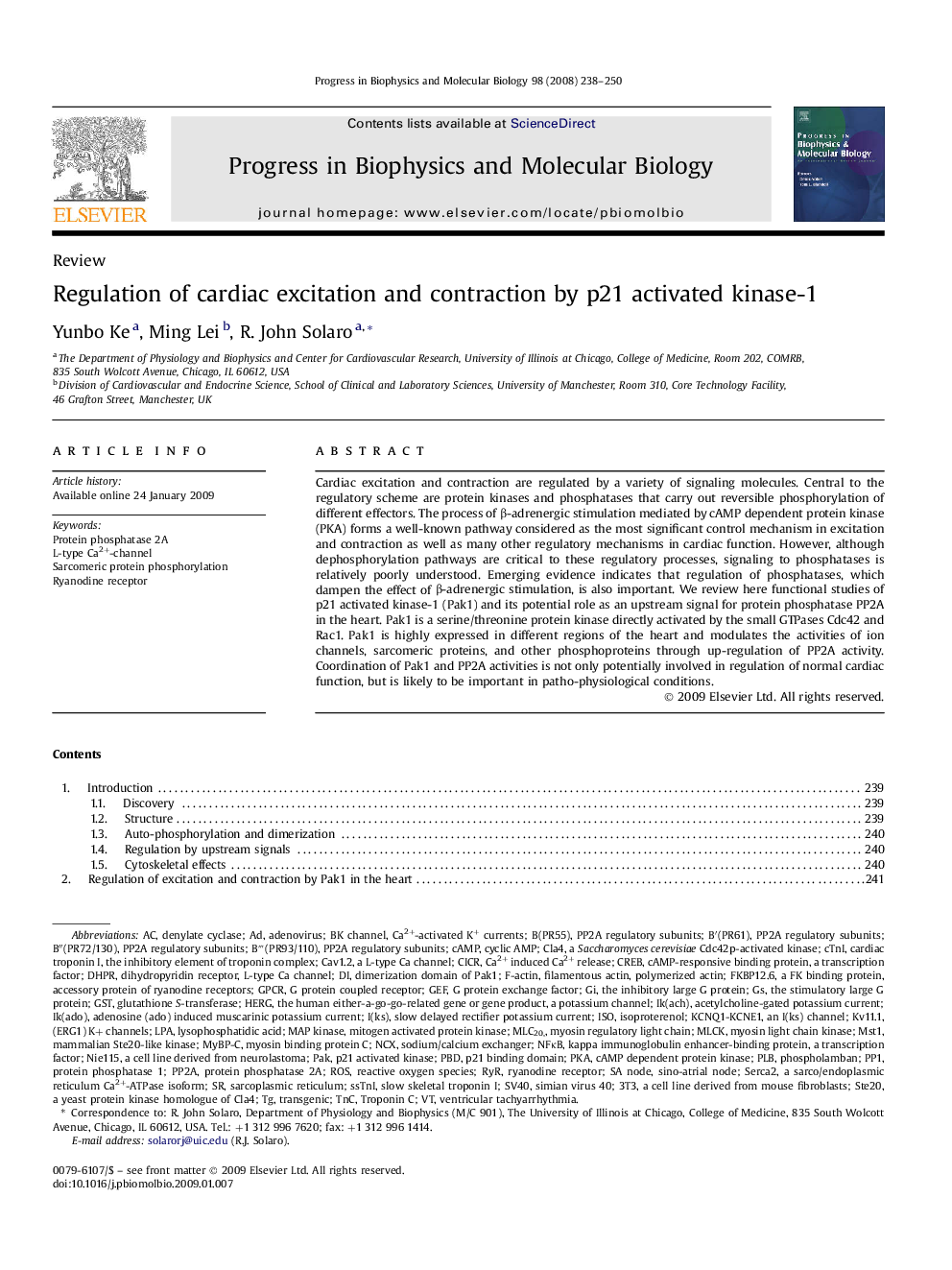| Article ID | Journal | Published Year | Pages | File Type |
|---|---|---|---|---|
| 8401781 | Progress in Biophysics and Molecular Biology | 2008 | 13 Pages |
Abstract
Cardiac excitation and contraction are regulated by a variety of signaling molecules. Central to the regulatory scheme are protein kinases and phosphatases that carry out reversible phosphorylation of different effectors. The process of β-adrenergic stimulation mediated by cAMP dependent protein kinase (PKA) forms a well-known pathway considered as the most significant control mechanism in excitation and contraction as well as many other regulatory mechanisms in cardiac function. However, although dephosphorylation pathways are critical to these regulatory processes, signaling to phosphatases is relatively poorly understood. Emerging evidence indicates that regulation of phosphatases, which dampen the effect of β-adrenergic stimulation, is also important. We review here functional studies of p21 activated kinase-1 (Pak1) and its potential role as an upstream signal for protein phosphatase PP2A in the heart. Pak1 is a serine/threonine protein kinase directly activated by the small GTPases Cdc42 and Rac1. Pak1 is highly expressed in different regions of the heart and modulates the activities of ion channels, sarcomeric proteins, and other phosphoproteins through up-regulation of PP2A activity. Coordination of Pak1 and PP2A activities is not only potentially involved in regulation of normal cardiac function, but is likely to be important in patho-physiological conditions.
Keywords
MST1Serca2RyR3T3DHPRPAKLPAPLBNCXGPCRCaV1.2cTnIPBDMLCKSV40GEFPP1PP2ACREBCa2+-activated K+ currentsp21 binding domainTNCGSTCa2+ induced Ca2+ releaseSA nodeMyBP-CF-actinHERGste20Kv11.1FKBP12.6p21 activated kinasepKacyclic AMPcAMPG protein coupled receptorNFκBROSAdenoviruslysophosphatidic acidISOisoproterenolVentricular tachyarrhythmiaTransgenicTroponin CSarcoplasmic reticulummyosin regulatory light chainmyosin light chain kinasesodium/calcium exchangerphospholambanSimian virus 40myosin binding protein Cprotein phosphatase 1protein phosphatase 2Amitogen activated protein kinasecAMP dependent protein kinaseBK channelCICRMAP kinaseSino-atrial nodeglutathione S-transferaseReactive oxygen speciesRyanodine receptor
Related Topics
Life Sciences
Biochemistry, Genetics and Molecular Biology
Biophysics
Authors
Yunbo Ke, Ming Lei, R. John Solaro,
